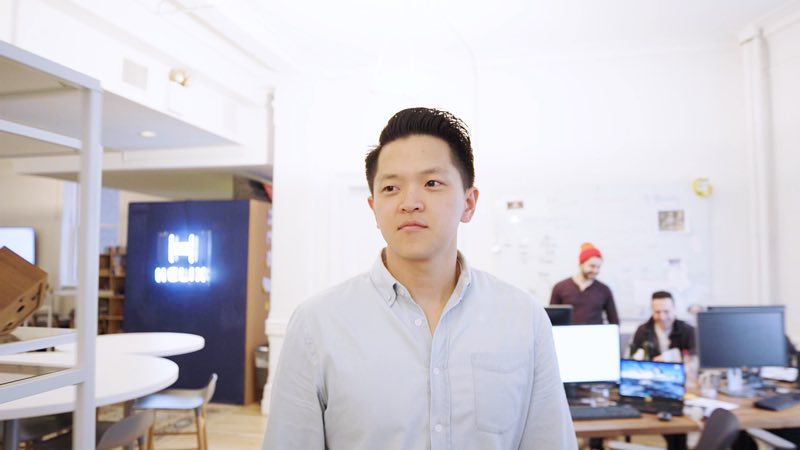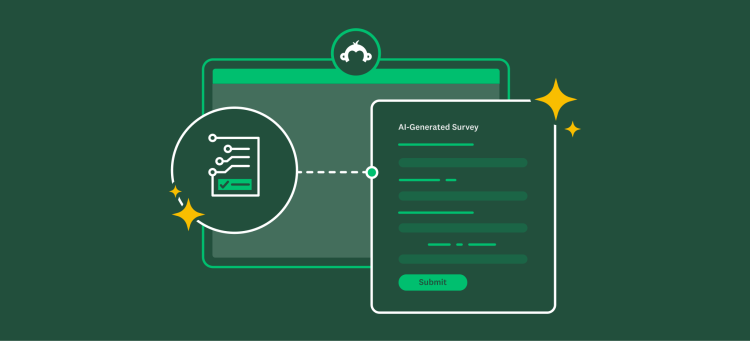As a senior consumer insights manager at online mattress company Helix Sleep, she’s trying to find out how people like to sleep, how soft or hard they enjoy their mattresses, or how warm or cool they want their pillows.
Anna has already reviewed the concept testing survey questions that will inform the company’s product development strategy.
She selected the demographic profile of the people she expects to take the survey and she targeted the U.S. locations where she wants answers from.
Helix Sleep needs to understand the sleeping habits of New Yorkers and Los Angelenos, because that’s where many early adopters of ecommerce products live. But Anna also wants to reach a broader audience to avoid a common strategic mistake.

In New York we get really siloed into thinking the consumer is just the New York consumer. But Middle America is really different from the East Coast and West Coast.
To guarantee that her survey will reach Helix Sleep’s ideal target market across the U.S., Anna has decided to buy responses through the automated market research solution SurveyMonkey Audience. As soon as her payment goes through and the survey is sent, she closes her laptop and heads out into the New York dusk.
Hopefully, she thinks as she walks down the subway stairs, I’ll have hundreds of survey responses ready when I get back to the office tomorrow.
Her neighborhood, the Lower East Side, is only four subway stops away. But even before she gets there an email alert pops up on her phone:
Your SurveyMonkey Audience project has completed.
Just like that.

While Anna walked to the subway station and traveled underground, hundreds of Americans were filling out her survey, telling her about how hard or soft they like their mattresses and how warm or cool they want their pillows. In a matter of minutes, Helix Sleep received a trove of highly valuable Market Powered Data showing what consumers want, how they like to sleep, and why.
Talk about agile market research.
Anna can kick off her shoes and relax now. In the morning, she’ll sift through the data to present the main takeaways to the Product, Engineering, and Operations teams.
Related content: 5 ways to use surveys to growth hack your startup
She doesn’t know this yet, but what Helix Sleep learns from listening to consumers in real time will radically modify its product development strategy in the coming months.
"SurveyMonkey Audience," Anna says, "helped a ton with product launches but also with changes to our business."
Make stuff people want!
‘The ultimate guide to concept testing’ has everything you need to know to test your ideas, products, and ads.
The story of Helix Sleep started in August 2015, right after Jerry Lin, Adam Tishman, and Kristian von Rickenbach graduated from The Wharton School of business at the University of Pennsylvania. After Jerry (pictured below) had a bad experience when buying a mattress for business school, the classmates thought someone should revolutionize the customer experience in this market.
Why not them?

They raised venture capital, built a website, and moved to New York to launch Helix Sleep. Right from the start, Jerry (now the CEO) says, they started using SurveyMonkey Audience to refine their product ideas.
The fast do-it-yourself consumer panel offered the right cohorts of consumers they needed to reach.
This was crucial because Helix Sleep bet everything on personalization. The founders had the strategic hunch that sleep should no longer be treated as a one-size-fits-all market. And their initial surveys confirmed this.

The biggest thing we learned from surveys is that sleep is so subjective. Everyone is really unique as to what is soft or what is firm. That validates our idea that off-the-shelf products don’t work.
The next question was, how do you develop and sell personalized products at scale?
Well, you start by listening to consumers at scale.
After the launch of their first mattress, Helix Sleep decided to develop additional products. That’s when they became heavy users of market research surveys on Audience, Jerry says.
Thanks to that their second product, the Helix Pillow, turned out to be strikingly different from the original concept.

As the product team developed the pillow, Anna, the consumer insights manager, fielded three consecutive consumer feedback surveys to test the concept. The results dramatically changed the startup’s plans:
- Everyone at Helix Sleep initially thought they would launch three pillows of varying thickness. But consumer feedback led them to create a pancake-type pillow which the user can adjust by inserting or removing two additional support layers.
- One key survey discovery was that consumers were very interested in a cooling cover for their pillow and were willing to pay extra for it. “We ended up getting great press from it,” Anna says.
- The use of successive surveys allowed the startup to move fast. “Through Audience,” Jerry says, “we’ve been able to cut our product development cycle in half.”
- The team also found out that 40% of consumers usually buy pillows when they purchase a mattress, one of various findings that gave them a good sense of the market segments they could target.
- They learned that people buy an average of 2.17 pillows per order, a data point that allowed the Operations team to create a demand forecast for their manufacturer.
- Finally, Helix Sleep also used surveys to find the right price point for the new product, which ensured excellent sales after launch.
The Helix Pillow was a hit.
“SurveyMonkey Audience essentially allowed us to launch the best product that we could,” Jerry says. “And in fact we sold out in the first month of our launch.”
If we didn’t have this data, we’d be developing prototypes and products blindly. We’d probably launch mediocre products, get negative feedback, and then have to iterate more.
The pillow product development process was so successful that Jerry and the team decided to embark in concept testing for a third product line: sheets. And the startup did all this with one dedicated market researcher, Anna, who says she trained herself in survey science.
Working as a one-woman-band, Anna says, SurveyMonkey’s features usually save her a lot of time:
- Ease of use: She can write surveys in a Word document and paste the questions over.
- Filters and reports: She uses them to create easy-to-share reports for the larger team. “Some charts are already made,” she says.
- Using the Audience consumer panel expanded her reach to a lot more potential consumers.
- “The quickness of responses on Audience is great,” Anna adds, and says about her subway anecdote: “That happened a lot of times.”

Helix Sleep progressively expanded its use of surveys to other business needs beyond product development, like product feedback, customer satisfaction, and market research for potential future offerings.
From business plan to multiple product lines, surveys have been crucial in Helix Sleep’s attempt to revolutionize the sleep market.
Jerry credits SurveyMonkey Audience with helping the company land on a successful product development strategy.
“It’s been extremely huge,” he says.
We wouldn’t be able to launch the right products at the right price point and be able to grow our business and brand without SurveyMonkey Audience.
Test your products with the right Audience. Target survey respondents by demographics, consumer behavior, geography, and more. See how our targeting works.




